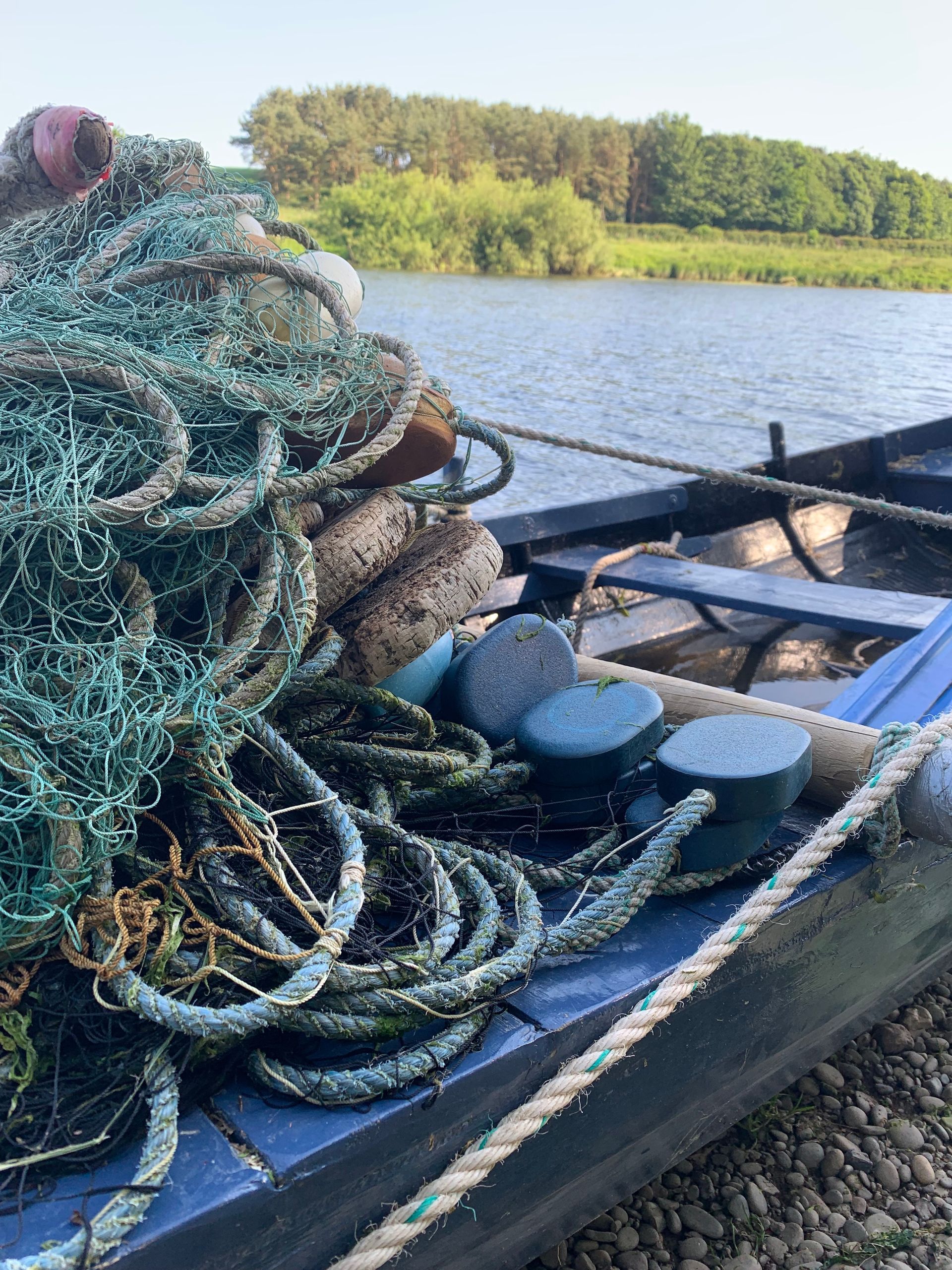The Coble
The Coble
Quipu - the Spanish spelling of the Quechua word for ‘knot’
A Salmon Coble loaded with fishing nets, ropes and other objects. An idyllic midsummer setting at Paxton House on the north shore of the River Tweed, around five miles upstream from Berwick.
The image is static yet sits as part of a wider dynamic ecosystem. To paraphrase John Muir ‘when you tug at anything in nature, you find it attached to the rest of the world.’
So what of these attachments, interconnections and threads. The Coble is positioned at one point in the hydrologic cycle. The World Ocean Day 2023 theme ‘The Planet’s Ocean’s Changing Tide’ set out the need to address the challenges faced by rivers, lakes and oceans with a view to environmental protection.
The earth is a watery place, around 70 per cent of its surface is water covered. The ocean sustains our whole planet. It contributes to the air we breathe, the food we eat and three billion people depend on marine and coastal biodiversity for their livelihood. More than half the oxygen in our atmosphere is generated via photosynthesis by phytoplankton and seaweed in oceans. Oceans absorb around one third of carbon dioxide produced by humans and provide 80 per cent of the world’s biodiversity. Ocean currents, known as global conveyor belts, help regulate the earth’s climate, they are, simply, the blue heart of the planet.
Human interaction with the ecosystem also occurs at other interwoven levels. The Chilean artist and poet, Cecilia Vicuna, has explored themes of language, memory, dissolution, extinction and exile. Her work involves creating quipu - an ancient Inca recording and communication system made from knotted threads.
Quipu consist of variously coloured threads knotted in different ways. The practice of recording information through patterns of knots dates back thousands of years: quipu logged trial and census data, work schedules, calendars, music, directions, payments and sacrifices - a spatial and tactile conception of the world. Vicuna’s recent quipu installation at Tate Modern, spanning the height of the Turbine Hall, depicted a mother and child in the form of unspun wool, ripped linen, rope unlacing from its braid, knotted gauze and sleeves of protected net. The debris closer to the work included driftwood, hay stones, branches bearing berries and flat broken terracotta, all carefully chosen from the banks of the Thames. The artefacts in and around the coble resonate with some of the materials used.
Vicuna’s objects narrate the precariousness of existence through their own fragility. Her plea is that we may care for the earth because the earth cares for us. At the age of seventeen, she found a stick on the beach, and planted it in the sand. When it was vertical, ‘I had woven my place in the world.’ She drew a spiral, ‘the sea completes the work, erasing it.’ The notion of the self dissolving back into the environment, submitting to natural cycles, is the kind of ending Vicuna likes. Her self-mythology resonates with an ‘in life there is death’ perspective with everything falling apart as a result of a lack of connections, or, inability to make those connections. The innocuous coble raises many of these connections and their associated human and environmental dilemmas.
David Usher
June 2023
